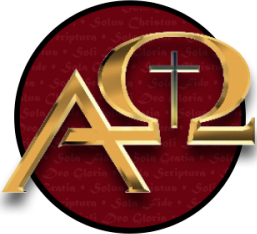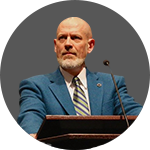Norman Geisler has written two open letters to Mike Licona regarding some assertions Licona makes in his massive tome “On the Resurrection of Jesus”. Specifically, why Licona seems to take Matthew 27:52–53 as ahistorical, seeing it as “poetic” or “legend.” While I have Licona’s new book, it is not at the top of my priority reading list at the moment, so I cannot comment on the accuracy of Dr. Geisler’s recitation of Licona’s position. If, in point of fact, Mike Licona has taken a position that this small fragment of text is non-historical and legendary, that would be very troubling. In fact, I would agree with almost everything Norman Geisler has said in his two open letters.
Let me comment briefly on this text from Matthew chapter 27:
“The tombs were opened, and many bodies of the saints who had fallen asleep were raised; and coming out of the tombs after His resurrection they entered the holy city and appeared to many.” (52-53)
This brief text has been the object of much scorn and ridicule, both by religious writers as well as atheists. It is surely easy to understand why naturalistic materialists would have a problem with this text, but of course, they have a problem with all texts that contain explicit supernaturalism. The question is why a believing Christian would have a problem with this particular text. Some have asked why it is that Matthew alone records this particular event. Of course, there is no overriding necessity for each of the synoptic Gospel writers to include everything that is found in the tradition from which they were deriving their narrative. Only those who think that Matthew is slavishly following after Mark and has no access to anything outside of the alleged “Q” and Mark would have a foundation for questioning Matthew’s singular recording of this particular event.
The fact is, many in the “academy” are embarrassed by text like this. Such stark claims of supernatural activity cause many who are seeking to be accepted by those entrapped in worldly wisdom to cringe. I saw this attitude many times when I was in seminary, and continue to see it to this very day.
The fact is, this is not all that difficult of a text. Surely, we do not have a lot of information about the event that Matthew narrates for us. There are all sorts of questions we cannot answer about the specifics of this event. Matthew does not intend to provide some kind of exhaustive accounting of all of the events that took place at the time of, and immediately following, the resurrection of Jesus Christ. But we should be fair with what he does say. First of all, this was not a general resurrection of all the Old Testament saints. We are told that “many bodies” were involved. How many? We are not told specifically, but I have always been amazed that one of the key elements of this text gets missed by even the brightest interpreters. What I mean is this: When these resurrected saints entered into Jerusalem they appeared “to many” how did those individuals know who they were? This was not the zombie apocalypse. They were not walking around in their grave clothes. They had to be recognized by the inhabitants of Jerusalem. That means they had died in the recent past. If they had died two hundred years earlier, how would anyone recognize who they were? Instead, I think we have here a parallel to the situation with Lazarus. Lazarus had died, but only in the recent past, hence, his resurrection could function as a clear demonstration of Jesus’ power over death. In the same way, these select saints, who had died in the recent past, when they appear in Jerusalem are recognized by those who knew them in life. Since we are told that they came out of the tombs “after his resurrection,” clearly it is the intention of Matthew to communicate that in the resurrection Jesus has inaugurated a new era. Death has been conquered, and evidence has been provided from multiple sources. We have no reason to believe that these individuals continued on beyond a particular period of time. That is, just as Lazarus experienced a second physical death and does not continue to live somewhere in hiding to this day, (unlike the three Nephite apostles according to Mormonism!) so these individuals would live for another period of time and then pass away. We also should not miss the fact that these were righteous people. They are called saints. Hence, this blessing upon them, no matter how long it lasted, would allow them to testify of God’s goodness, and his justice.
We would love to know more about this particular situation. We have a morbid interest in such things, the same kind of morbid interest that resulted in the Gnostic Gospels and their absurd stories about Jesus’ youth. Evidently, at least Matthew’s audience already knew about this particular situation and had some of the details that we do not have. In any case, its relevance is in its connection to the events surrounding Jesus’ resurrection, demonstrating that the entire event was unashamedly, openly and purposefully supernatural.
Is it any more difficult for God to tear the veil of the temple in two without this event being recorded outside of the New Testament narratives, than it is for him to raise certain dead saints in the vicinity of Jerusalem? Whenever I hear people say, “well, nobody else record this event, so it is therefore suspect!” I want to respond, “Really? Do you think Fox News was around back then?” Modern readers, conditioned by our instant news sources and the overwhelming speed with which events are reported to us, have an incredibly naive view of what was, and was not, recorded in history. Furthermore, if the veil in the Temple was indeed torn in two, who would have known about it? Would the Romans have known? Only a very select number of people would even have access to that part of the Temple. And we know that those people, the Jewish leaders, were the very ones who would never admit to such an event taking place at the very same time as the death of Jesus the Messiah. So do you really expect to find some kind of historical account of this outside of early Christian sources? Likewise, unless we adopt the absurd zombie apocalypse picture of huge crowds of the formerly dead wandering into Jerusalem willy-nilly, we do not have to struggle too much to understand how the situation in Matthew 27 might have taken place. Since these were indeed “saints,” we could assume a limited number appearing to a select audience, an audience that might well be the most open to the Gospel presentation itself. Maybe this was preparatory to the preaching of the gospel there in Jerusalem? We do not know, but neither can we rule it out. In any case, there simply is no reason, outside of an embarrassment warned from incipient naturalism, to turn this story into mere “legend” or “poetry.”
Which brings us back to the irony of the Geisler/Licona controversy. As I said above, I agree with Norman Geisler on the historical character of the text in Matthew 27. His reasoning is clear, and cogent. And so I simply have to ask the question: How can Norman Geisler think so clearly on a matter like this, and then ignore the mountain of much more compelling, clear, full, and convincing evidence that demonstrates the fraudulent claims of Dr. Ergun Caner? How can someone who argues so well on a matter like this post the absurd excuses provided to him by Ergun Caner on his website? The contrast certainly speaks to how seriously Dr. Geisler takes the Ergun Caner situation.
I find it ironic that Norman Geisler would note that Mike Licona has not yet responded to his open letter. It has been over a year since I posted a video asking Dr. Geisler three simple questions. He is well aware of the video, and he has not responded to it. It hardly seems like Dr. Geisler has grounds for complaining about Licona ignoring his open letter, when Dr. Geisler himself has remained so silent for so long on such an obvious issue as the dishonesty of Ergun Caner. Something to think about.


